The Earth's Structure: Summary
The structure of the earth has three main parts: the core, the mantle and the crest. The centre of the earth is the core, which is surrounded by a layer called the mantle. The outer layer of the earth is the crust.
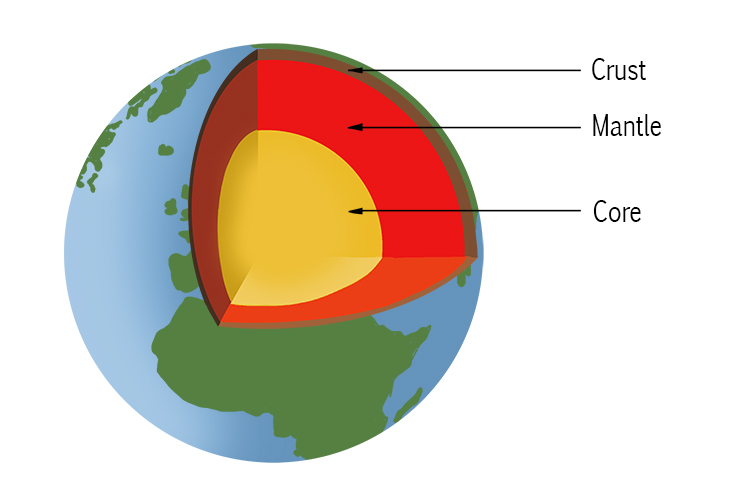
To remember this, see The structure of the Earth in our chemistry section.
The lithosphere includes the earth's crust and the upper mantle.
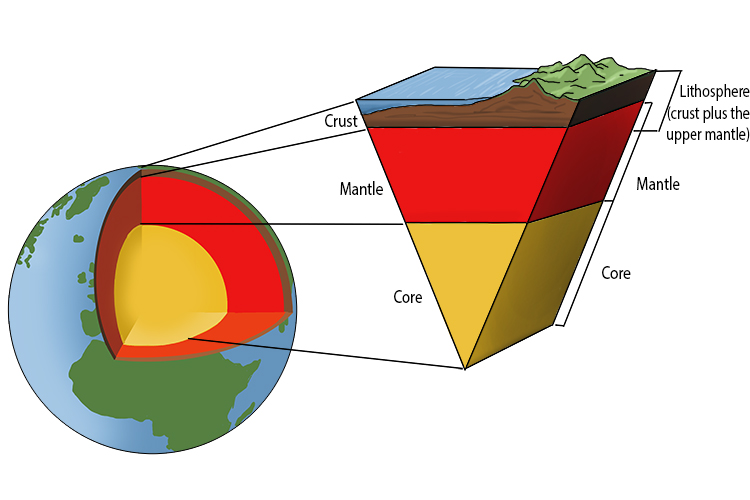
To remember this, see Lithosphere in our chemistry section.
Tectonic Plates
The lithosphere is divided into tectonic plates.
To put it another way, the surface of the earth is split into a number of large sections of rock, and these are the tectonic plates.
Remember, a tectonic plate includes the earth's crust and upper mantle.
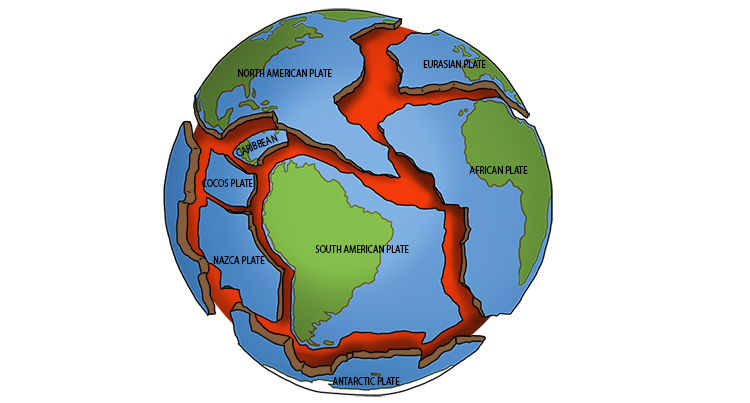
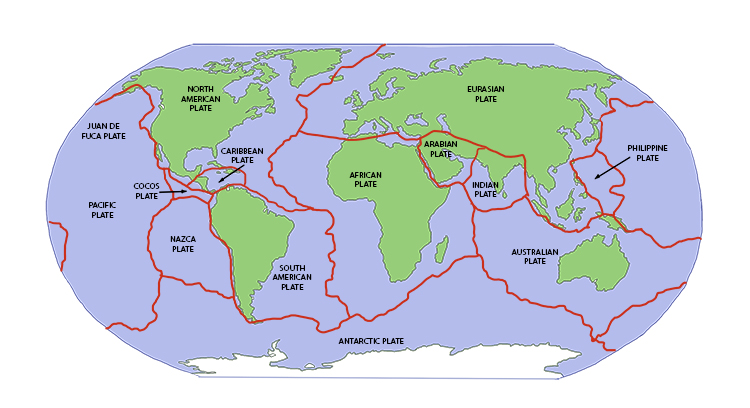
To remember this, see Tectonic Plates in our chemistry section.
The thickness of the earth's crust (the outer layer) varies a great deal, but generally speaking:
Continental (land) crust is thicker but lighter (less dense)
Continental crust is thicker, older and lighter. It is usually between 30 and 50 kilometres thick.
The less-dense continental crust has greater buoyancy, causing it to float higher in the mantle. The average surface elevation of continental crust is 4.8 kilometres (3 miles) above the ocean floor (i.e. 4.8km above the ocean crust).
Oceanic (under the ocean) crust is thinner but heavier (denser)
The more dense oceanic crust is usually between 5 and 10 kilometres thick.
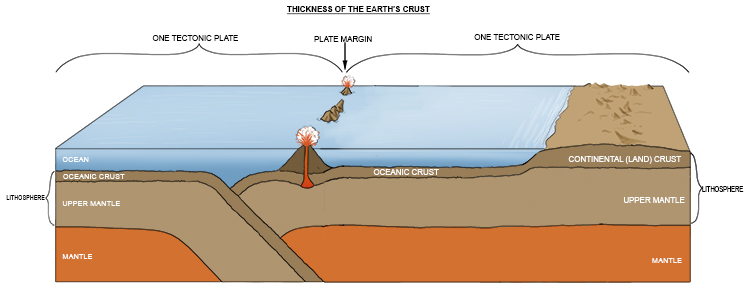
Tectonic Plate Margins
The boundary between two tectonic plates is called the plate margin.
The plate margin (or boundary) can be in the ocean, on a continent (land) or, very frequently, where ocean and land meet.
There are three types of movement around plate margins: conservative, constructive and destructive.
A conservative plate margin is where two tectonic plates (each plate consisting of the crust and upper mantle) slide past each other.
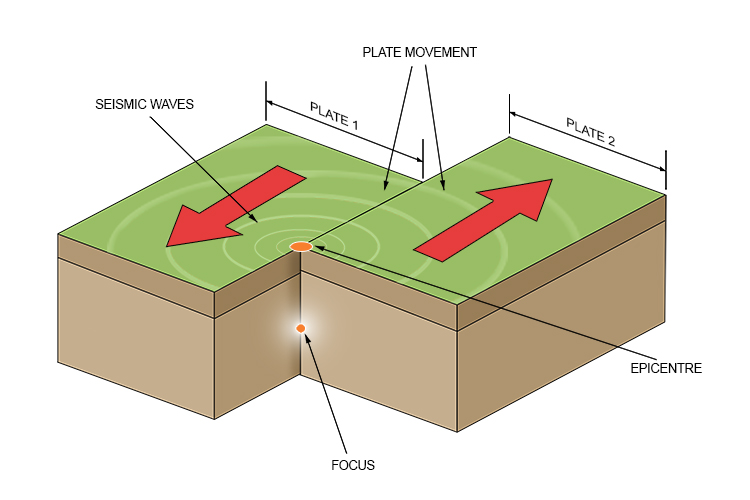
A constructive plate margin is where two tectonic plates (each plate consisting of the crust and upper mantle) move apart.
Note: Constructive plate margins are also called divergent plate margins by some scientists.
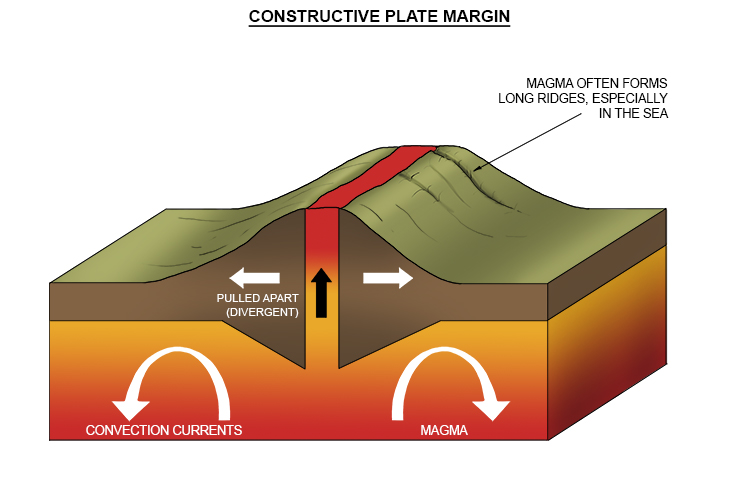
Finally, a destructive plate margin is where two tectonic plates converge or come together.
Note: Destructive plate margins are also referred to as convergent plate margins by some scientists.
Destructive plate margins can be further divided into three types:
- Where two thin oceanic plates converge in the ocean.
- Where two thick continental plates converge on land.
- Where a thick continental plate and a thin oceanic plate converge where land and ocean meet.
Note: There is no such thing as purely continental tectonic plates. They are usually so big they vary around their edges, or margins, and across their surfaces, from the thin plate in the ocean to the thicker plate on land.
1. Destructive plate margin with two thin oceanic plates
When two thin oceanic plates converge, one of them will subduct. Subduction is when one crust is forced beneath the other as they collide.
The denser crust will be the one that subducts.
When a destructive plate margin occurs in the ocean, trenches and volcanic islands are formed. The volcanic islands are formed all along the plate's boundaries.
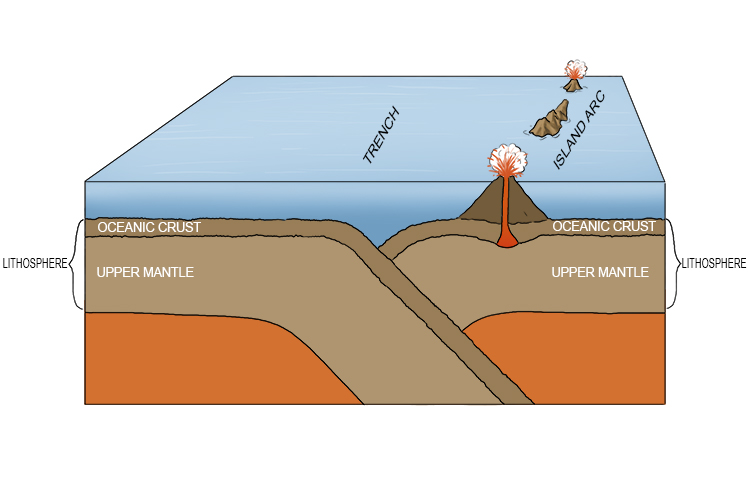
Destructive plate margin with two thin oceanic plates – one plate will subduct.
2. Destructive margin with two continental land plates
When two continental (land) plates converge, one cannot sink below the other, so the edges buckle upwards to form what are known as fold mountains.
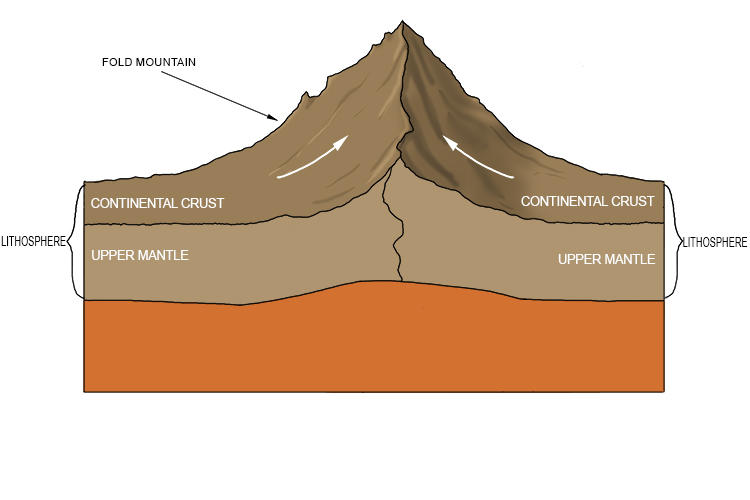
Destructive plate margin with two continental plates produces fold mountains.
3. Destructive plate margin with an oceanic plate and a continental (land) plate
When an oceanic and a continental land plate converge, the oceanic plate will always subduct. This is due to the oceanic plate being heavier (denser) than the continental plate. Again, subduction is where one plate is forced beneath the other as the two collide.
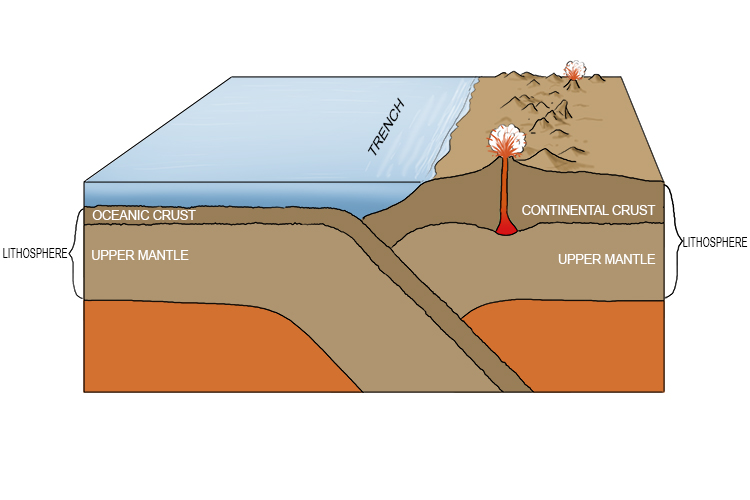
What causes movement of tectonic plates?
Thermal convection in the mantle – the layer between the earth's core and the crust – causes movement of tectonic plates. This thermal convection is the movement that results from hot material rising and cooler material sinking inside the mantle. This flow governs all the types of plate movement covered in this summary.
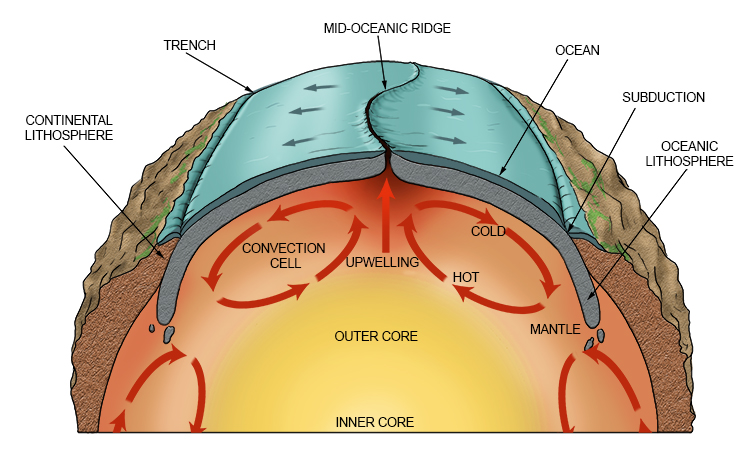
Thermal convection in the mantle causes tectonic plate movement.
See the pictures that follow this summary for help in remembering key facts about tectonic plates.




